Did you know luxury cars in the GCC are so prevalent that they outnumber basic car models nearly 3:1? It's not a coincidence; it's a revelation you need to understand.
With the GCC's growing taste for opulence, learning why luxury vehicles are dominating these roads has never been more critical. Stay tuned to uncover secrets of this fascinating trend.
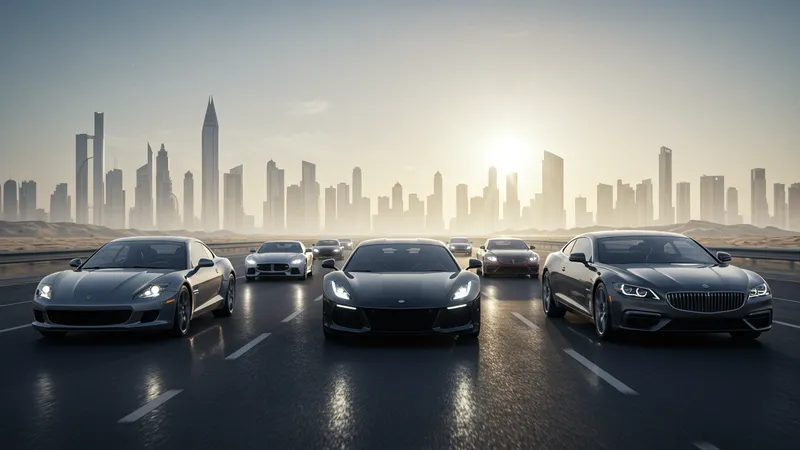
What’s shocking is how deeply embedded these luxurious tastes are in the culture of the GCC. You might think this is merely about wealth, but there’s more—social standing, prestige, and even tradition play massive roles. Yet, this cultural flair for luxury vehicles isn’t entirely what you think it is. Are these cars just status symbols, or do they also serve an unexpected purpose? But that’s not even the wildest part…
While many people believe that owning a high-end car in the GCC is a sign of extravagance, it serves a practical function, too. Extreme weather conditions demand superior engineering and comfort, making luxury cars more of a necessity than a frivolity. Even the premium costs are justified in surprising ways, as you’ll soon discover. What you're about to read will flip your understanding completely…
How about the financial maneuvers that make this lifestyle feasible for so many? The GCC citizens are not merely splurging; they’re strategizing in ways that could reshape your view of luxury altogether. What happens next shocked even the experts…
Let’s dive into the fascinating history of luxury cars in the GCC. Decades ago, the streets were dominated by practical, utilitarian vehicles. However, a cultural shift sparked an unprecedented rise in luxury car ownership. Many believe this was fueled by a booming economy, but the real catalyst was something more nuanced. Understanding this evolution provides insight not only into consumer behavior but also into the socio-economic landscape of the region. It’s a tale of ambition and identity, masked by a veneer of affluence.
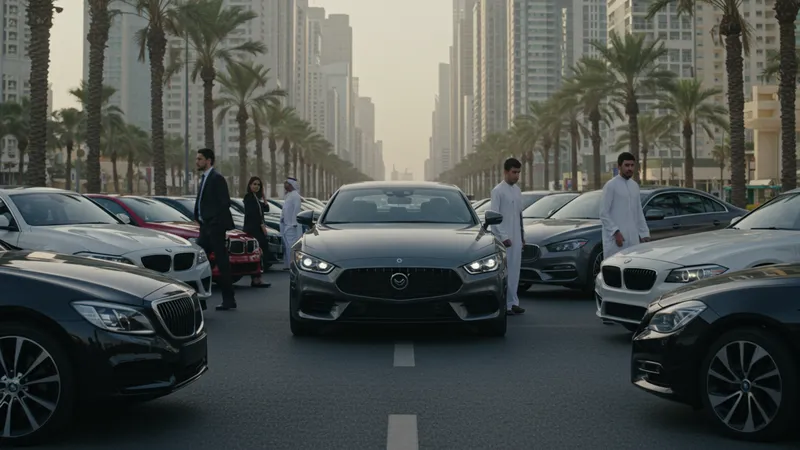
But who are the key players in this narrative? Surprisingly, they aren’t just the traditional elites. Younger generations, empowered by newfound wealth and a changing society, are rapidly joining the ranks of luxury car owners. This democratization of affluence seemed unlikely just a few decades back, which might have you wondering why this change transpired so quickly. It's not just about personal success; there’s a deeper common aspiration at work.
This all intertwines with governmental policies that you might not foresee as relevant. Subsidies and duties play a significant role in making luxury more accessible. Other encouraging policies reveal a grander strategy at play. All of this creates a scenario rich with social dynamics and aspirations far beyond what simple wealth can define. But there’s one more twist…
Let’s not forget the intriguing phenomenon of cross-border car investment. Many wealthy residents see their cars as an asset, not just a luxury. They purchase in one country only to sell or relocate them for profit or prestige later on. This isn't just savvy economics; it's a tactical play. Understanding these moves might just change your view on wealth entirely. What you read next might change how you see this forever.
Unpacking the psychology of a luxury car buyer in the GCC reveals insights that are as intriguing as they are surprising. Forget common stereotypes; these buyers are thoughtful strategists, motivated by unique cultural touchstones. When you realize that for many, these vehicles are less about showing wealth and more about celebrating heritage, your perspective shifts entirely. This realization stems from a deep cultural appreciation rather than mere opulence.
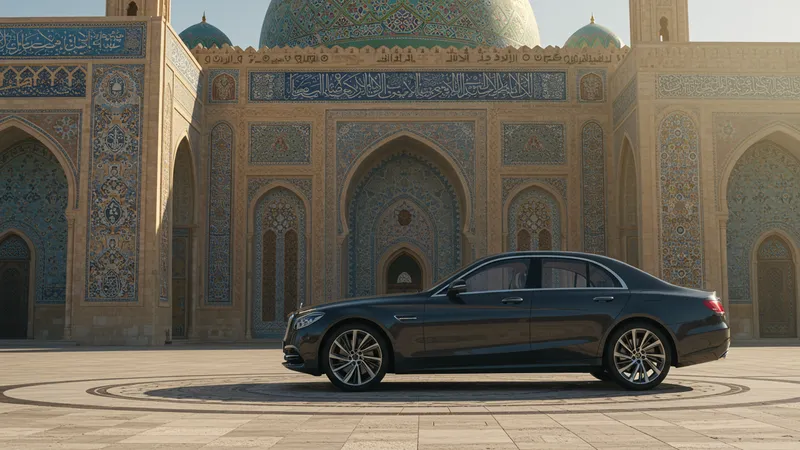
One must consider the various roles luxury vehicles play in social ceremonies. These aren't just cars; they're central to celebrations, weddings, and even daily rituals. Within these social contexts, they act as power status symbols, signifying success but also deep-rooted traditions. This might sound unimaginable to outsiders, yet it clearly underlines how the vehicles serve as much more than transportation.
There's also an unexpected element of wisdom; many buyers adopt a 'legacy mindset'. They see cars as part of a lasting, familial heritage, meant to be passed onto future generations. This may not align with Western perceptions of vehicle depreciation, yet it provides for an intriguing approach to luxury ownership—one where emotional value overshadows material worth.
The narrative is about more than just luxury—it brings economic reflections as well. The decision-making often involves considerations about long-term returns and asset diversification. Vehicles personalize family narratives and global connections, a concept foreign to many Western markets. But this is just the beginning of understanding a complex culture. What you learn next might change everything you assumed.
When people think of luxury cars, they often overlook their ability to endure extreme environments. Remarkably, the harsh climates of the GCC have made luxury cars not just preferable but practical. High-performance air conditioning systems, specialized tires, and extra robust engineering translate into a comfortable, safe, and efficient ride that’s crucial in the unforgiving desert sun. This isn't an indulgence—it's practically an investment in comfort and safety.
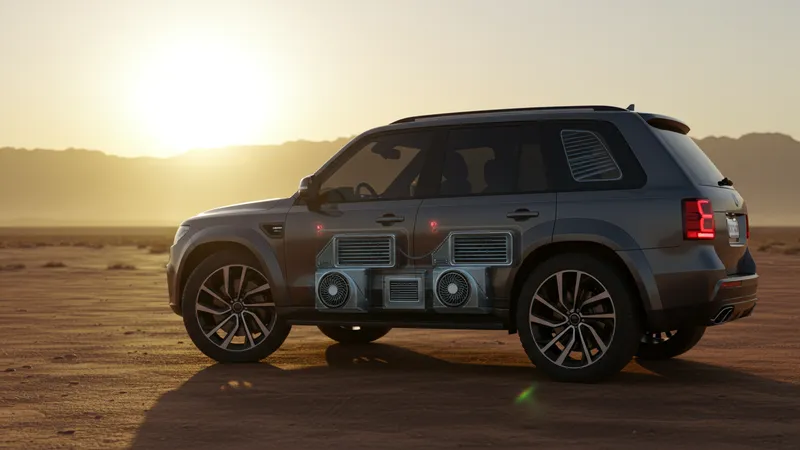
Moreover, the attention to detail in luxury vehicles enhances convenience. Advanced navigational systems offer more than simple guidance; they’re programmed for dynamic weather predictions and alternative route suggestions, a lifesaver in unpredictable weather conditions. Imagine averting a sandstorm thanks to state-of-the-art vehicle tech! These benefits, often underappreciated, redefine what it means to own a luxury car in this region.
Many don’t realize that these vehicles often boast advanced safety features. Engineered with cutting-edge technology, luxury cars frequently incorporate automated safety engineering that pedestrian cars lack. Features include everything from adaptive cruise control to night-vision capabilities, elevating what it means to feel secure on the road.
But what truly makes them indispensable is the peace of mind they offer. Knowing that you and your family are shielded by the best safety measures money can buy is invaluable. It’s not just about the extravagance; it’s a pragmatic choice leading to better living standards, freeing you from worry. What you discover next is bound to surprise even more.
In recent years, global car manufacturers have increasingly chosen the GCC as the backdrop for their luxury car launches. At first glance, this might seem like mere showmanship, but the strategic importance goes much deeper. The region's affluence and penchant for opulence make it ripe for unveiling the world's most cutting-edge vehicles. Dealers recognize this, resulting in showcases that captivate worldwide audiences.
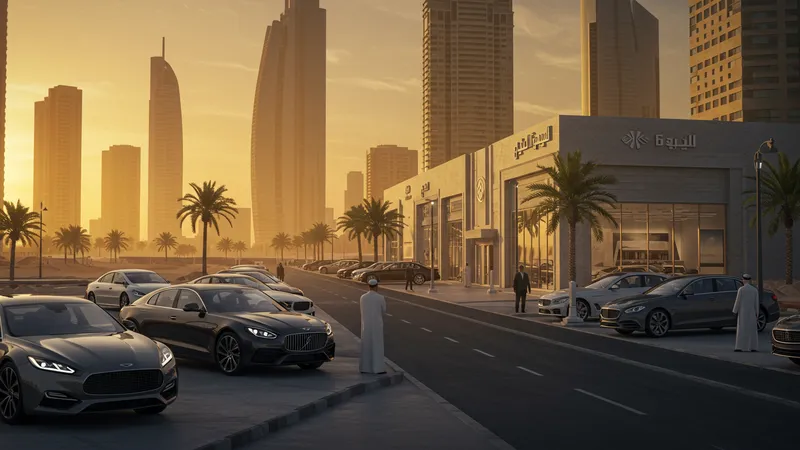
Many of these releases aren’t just about flaunting opulence; they’re meticulously crafted marketing experiments gauging market reactions. A single successful launch can validate concepts before entering global markets. The GCC provides a testing ground where luxury, performance, and innovation meet consumer expectations. It's the perfect storm for brands aiming to make a significant impact.
Events frequently held in stunning locations from Dubai’s archipelagos to Qatar’s ultramodern ports. These displays often become social media sensations, proving how brands capitalize on regional uniqueness to elevate their prestige. These locales aren't just luxurious backdrops; they redefine high-end living and transform consumer experiences into grand spectacles.
The locale becomes a symbol. Launches here are akin to a royal endorsement, promoting authenticity and aligning global luxury aspirations with regional culture. The tale told here is more crucial than anywhere else—it shapes international trends and influences how the world perceives new technologies. But just wait—there’s another layer to this extravagant tapestry.
Lovers of luxury cars in the GCC are treated to features straight out of science fiction. The technology in these vehicles surpasses that of many private aircraft. Imagine interiors equipped with biometric control systems that adapt electric seat settings to each individual's unique preferences. Are these vehicles cars or personalized counselors on wheels?
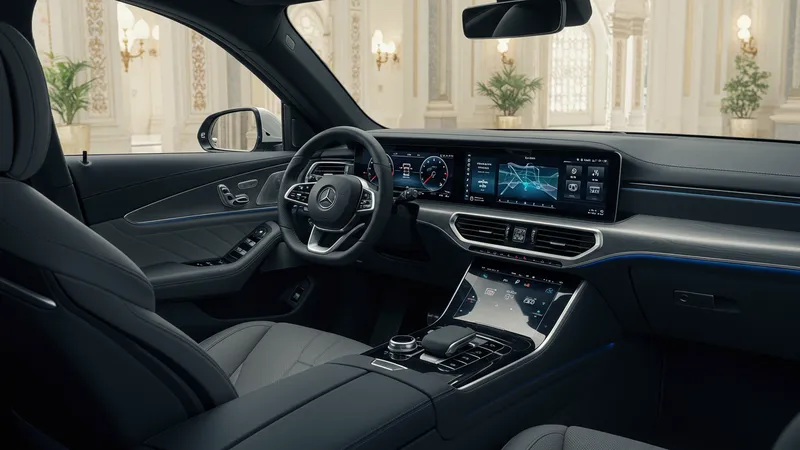
The competition among manufacturers leads to impeccable advances. From Altech Infotainment to hyper-interactive systems, interacting with these vehicles feels like a connection rather than routine. You'll find voice-activated assistants, virtual co-drivers, and real-time navigational updates smarter than your average GPS. These features revolutionize the driving experience, changing what consumers expect from the comfort of their four-wheeled investment.
Advanced autonomous adaptations are also gaining traction. Once confined to the realm of science-fiction, self-parking or driver-assistance features in these cars are now as common as headlights. Automakers are piloting semi-autonomous driving modes in controlled conditions, moving us incrementally closer to a driverless future—something that was unthinkable a generation ago.
This relentless technological development aims at higher safety, luxury, and performance benchmarks. What's more, these initiatives aren't just token gestures—they represent manufacturers' long-term plans to make luxury synonymous with sustainability and cutting-edge conscientiousness. Yet still, what's about to happen on a global scale will astound even the most seasoned observers.
The buzz around luxury cars in the GCC is no accident. Social media plays a pivotal role in how these vehicles are perceived and desired. Posts flaunting new models, luxury features, and events paint a picture of luxury that enthusiasts worldwide can’t get enough of. Influencers curate collections and compare features, turning the market into a digital fashion show on wheels.
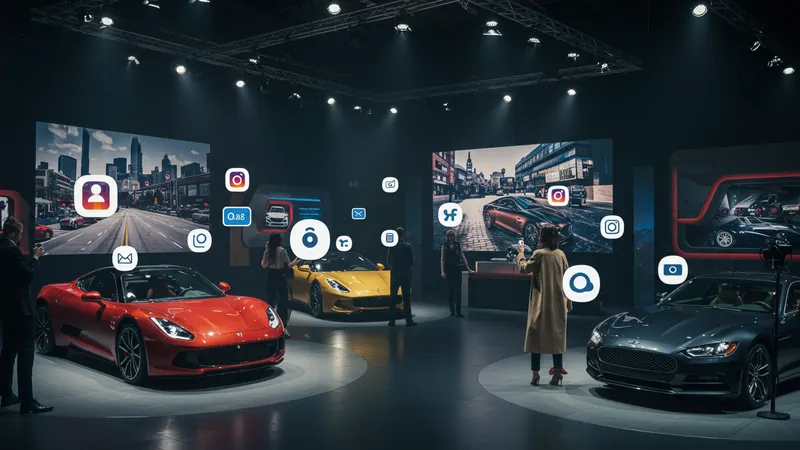
Social media doesn’t just reflect trends—it drives them. Platforms become marketplaces for dealership offerings, making transactions more seamless and social. The ability for consumers to window-shop digitally ensures they remain connected to the latest offerings and promotions. In a region where exclusivity matters, the digital world offers an accessible way to stay ahead of the game.
Campaigns crafted for social impact lend an air of allure that traditional marketing can't achieve. Viral posts and carefully curated hashtags become an essential part of a vehicle's identity before it even hits the road. Brand perception solidifies through likes and shares, creating a digital form of validation.
What’s really astonishing is how this creates opportunities for consumers to become part of a larger narrative. With personal testimonials and reviews, they partake in an evolving story that brands carefully craft. By reshaping the luxury auto market, social media presents complexities that reveal even deeper tendencies within consumers. The next big wave unearths something bolder. Stay tuned.
Anyone who owns a luxury car knows that purchase price is just the tip of the iceberg. Maintenance is an entirely different beast, and nowhere is this more evident than in the GCC. Servicing, taxes, and insurance rates are sky-high, yet persistent demand reveals just why so many are willing to pay the premium. The reality is multifaceted, encompassing everything from pride to strategic spending.
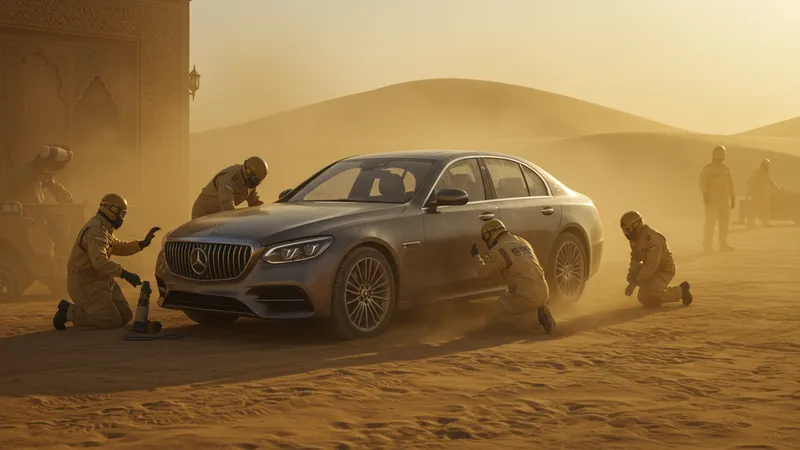
Often hidden from the glamorous presentations is the toll the harsh climate takes on luxury vehicles. Dust and heat accelerate wear and tear, making regular, costly maintenance a necessity. Discerning owners invest in specialized services that prevent these issues, ultimately preserving their vehicle’s integrity and longetivity. But is it warranted as a logical choice or merely personal gratification?
Despite these hurdles, the preowned car market flourishes, offering made cars accessible to more consumers. People often trade up, seizing opportunities to upgrade or switch brands. It’s the hidden secret of the regional luxury car scene: the trade halls brim with options that make owning one less daunting.
Nonetheless, every car is an investment in prestige and represents an understanding beyond mere ownership. Maintaining such vehicles becomes part of being part of an opulent narrative that people cherish beyond material value. The parameters for ownership extend beyond abundance to what’s truly fulfilling. What follows may affect our views on investment and cost forever.
Who would’ve thought that the region known for its oil reserves would be at the forefront of green tech in luxury vehicles? Yet, here we are. The GCC is witnessing a significant transformation in this space, spearheaded by luxury car makers who cater to environmentally-conscious consumers. This emerging trend underscores sustainability without skimping on luxury.
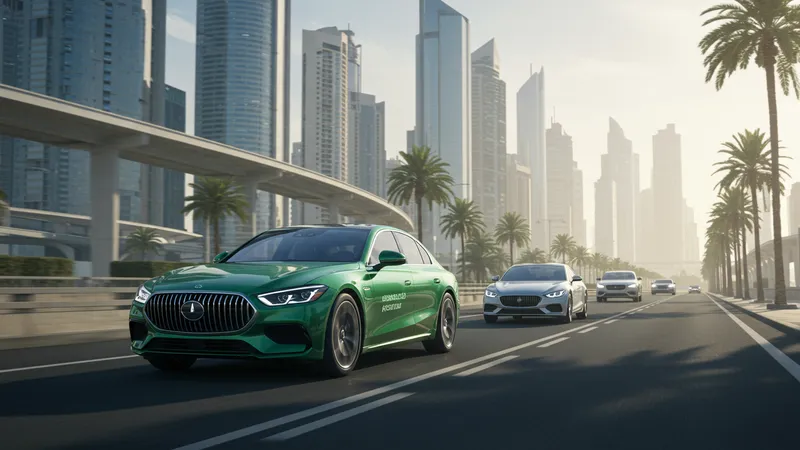
Hybrid models and full-electrics are becoming status symbols unto themselves, merging environmental awareness with luxury. Features include regenerative braking and energy efficiency systems previously unseen in the category, making these vehicles both opulent and conscientious. They're less a sacrifice and more an adaptive choice aligning with future-ready thinking.
Manufacturers are desperate to crack the green code, experimenting with materials and processes that lessen environmental impact. The shift may seem subtle, but the ramifications are extensive. They're transforming a traditionally exclusive market into a progressive one that sets an example for global markets to emulate.
What remains groundbreaking is how rapidly these vehicles are being integrated into everyday life. They offer a glimpse into the future, where opulence and sustainability coexist happily. Innovations replace tradition, reshaping automotive expectations and inviting more eco-conscious mindsets. The developments in the coming years might just exceed our imagination.
In a fascinating turn of events, pop culture is leaving an indelible mark on the luxury car market in the GCC. Films, music videos, and global media play significant roles in defining what’s desirable, serving as unofficial advertising for high-end vehicles. More than just a passing trend, this fusion of media and motors is driving significant consumer decisions.
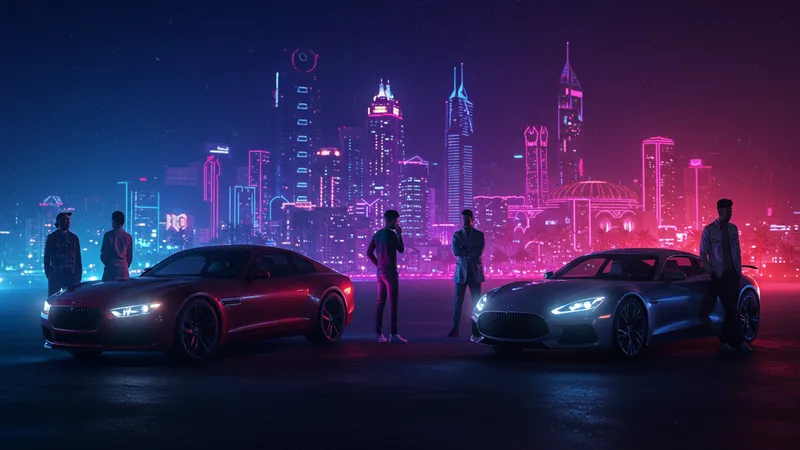
Whether it’s the portrayal of cars in blockbuster films or the music artists showcasing their anime-inspired rides, consumers are eager to emulate what they see. Brands tap into this by cultivating collaborative relationships with entertainment stars, further blurring the lines between reality and fiction. It’s a captivating spectacle, showing just how intertwined these realms can be.
A particular transformation is how brands leverage celebrity endorsements. Instead of traditional advertising, they opt for influencers with massive followings to reach niche yet dedicated audiences. This isn’t just about positioning; it’s about authenticity and cultural relevance, blending luxury with lifestyle seamlessly.
The result? An indelible imprint on consumption patterns that marry pop culture with car releases and trends. The dynamic evolves, challenging older ways of thinking and solidifying relationships with new groups of consumers who value popular culture as part of the luxury experience. But where does this reinforce or diverge traditional marketing strategies? Read on as we explore more.
A recent dramatic shift has transformed how residents of the GCC engage with luxury cars. Increasingly, rental options have attracted a new breed of car enthusiasts. Leasing or renting provides a taste of opulence without the permanent commitment, accommodating fluctuating demands for variety and spontaneity. It’s a strategy as practical as it is exhilarating.
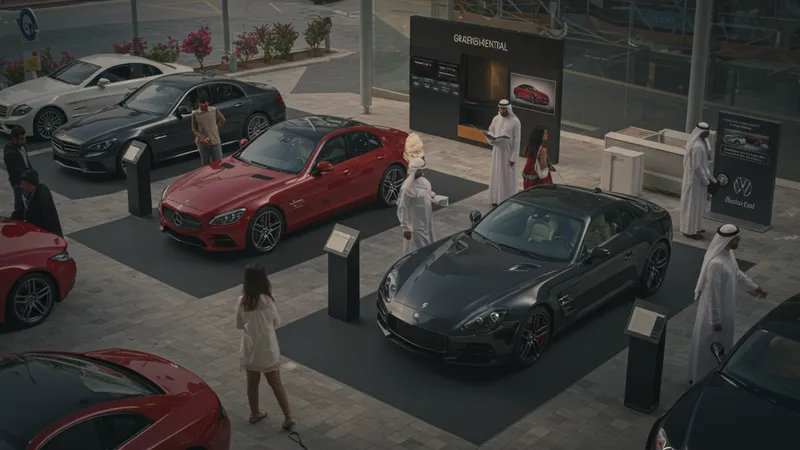
This approach doesn't only satisfy curiosity but offers economic flexibility as well. Professional car rental companies operate with tailored packages, targeting both short-term visitors and long-term residents. Practicality dictates these decisions, enabling consumers to enjoy premium rides without strings attached.
Technology plays a crucial role here as well. Apps and platforms simplify rental processes to mere taps. Customers compare features, book instantly, and even find a vehicle waiting at their convenience—all through mobile screens. Limited only by imagination and budget, customers have the freedom to explore makes, models, and trends like never before.
For tourists or those reluctant to invest permanently in one brand, this avenue is a compelling alternative. It introduces luxury as an experience rather than possession. While rental adjusts the nation’s identity with luxury, it garners international recognition, challenging stereotypes about ownership and exclusivity. But the story doesn't end there—there’s another layer to this evolving narrative.
The GCC isn’t just a passive player in the luxury car market; it’s actively shaping global patterns and preferences. What happens in the glittering avenues of Dubai and Riyadh inevitably influences markets in New York, Paris, and Tokyo. As the region becomes a trendsetter, what emerges is an intriguing intersection of local culture meeting global demand.
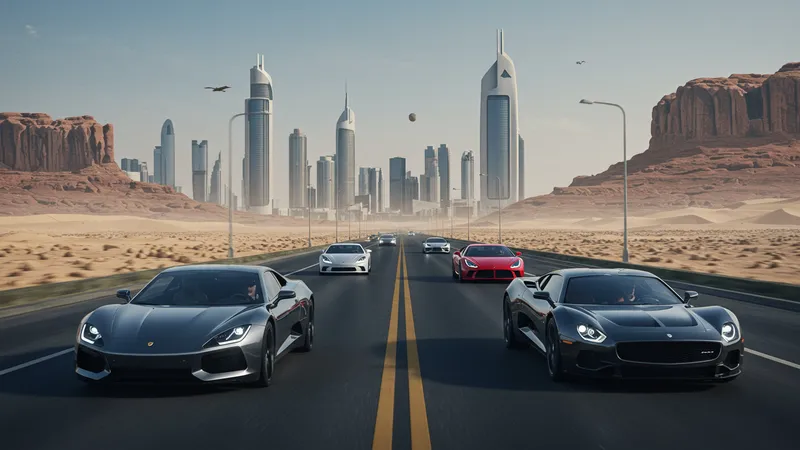
Manufacturers flock to the GCC to launch breakthrough models, with the region serving as a litmus test for future releases. Innovations that perform well here often set the stage for worldwide launches. These vehicles are not merely dream machines; they become reality-shapers, augmenting automotive evolution.
Further intriguing is how this burgeoning influence reshapes perceptions of opulence and mobility worldwide. Luxury evolves from visual splendor into palpable, functional desirability, incorporating utility and appeal that transcends borders. GCC buyers, increasingly aware of their global standing, demand the best the world has to offer, setting the standard in the process.
The narrative here isn’t only about extravagance; it’s about the emerging tapestry of expectations and capabilities that luxury represents. Cars are woven into this, becoming powerful icons not only of wealth but of cultural fluidity and aspirations. What happens next signifies a shift worth keeping an eye on, hinting at upcoming phenomenal challenges.
In the realm of luxury cars, resale remains a vital industry in the GCC, with evolving factors that greatly influence it. Unlike typical perception, these markets aren't flooded merely with depreciated roles but rather showcase a dynamic aspect of luxury car culture. Owners selling and upgrading introduce fascinating narratives on wealth and status.
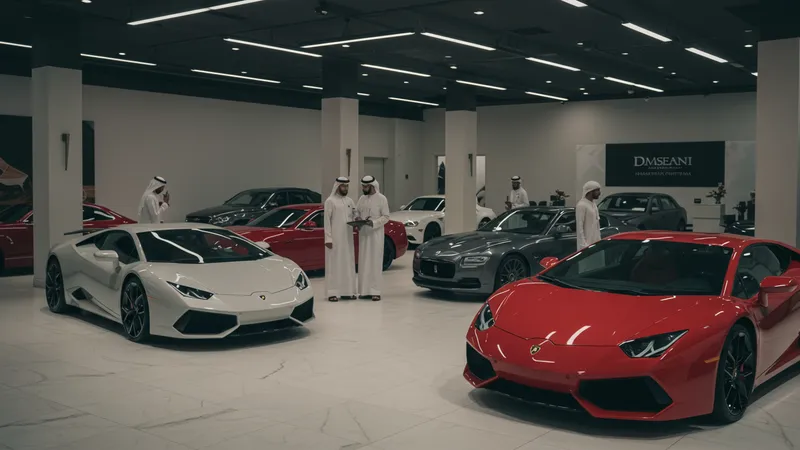
Resale embodies a strategic financial move here, driven by market conditions and allure for newness. Surprisingly, many cars, hardly used, maintain exceptional resale value due to constant demand and limited depreciation. The savvy nature of GCC buyers turns that market into a lucrative playground where pre-owned luxury becomes a personalised badge of wisdom.
Facilities for assessing and maintaining resale standards exist throughout the region. More than commerce, it’s a relationship that balances impatience for the latest with intelligent financial strategies. Extensive inspections and refurbishing work guarantee cars that stand the test of style and performance, providing reassurance to all involved.
This ecosystem demonstrates a nuance in the luxury equation, moving beyond mere ownership and towards a sophisticated view of assets. It outlines markets’ elasticity, inviting everyone to be part of a dynamic asset management process. Therefore, one's mark in this enduring theatre extends beyond financial status proving the ever-lasting, multifaceted essence of luxury.
The future of the GCC's luxury car market is as exhilarating as it is uncertain, brimming with challenges and opportunities. The traditional allure of gas-guzzling opulence is gradually giving way to a more nuanced tapestry where sustainability, innovation, and evolving consumer demands delicately interlace. The road ahead is paved with change.
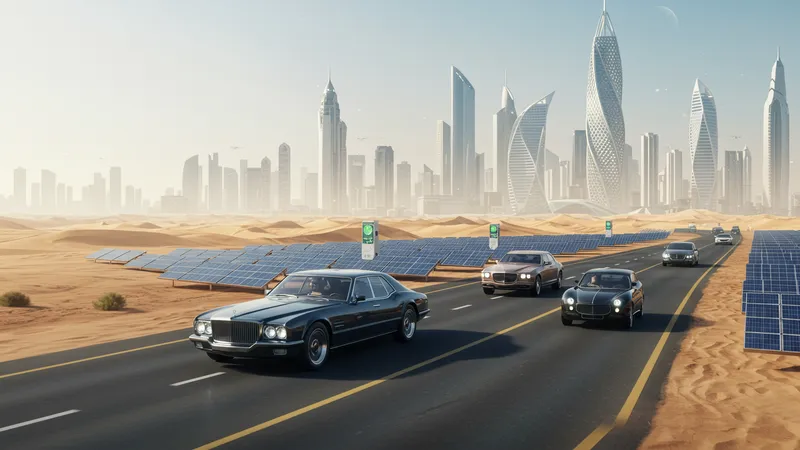
One looming challenge is adapting to the global push for sustainability without compromising the hallmark of luxury. Balancing these priorities presents an enticing opportunity for innovation and ingenuity. Brands that respond with adaptability define future market dynamics, carving a niche within this unexpectedly pivoted realm.
The role of technology is another critical factor driving change. As expectations heighten with each new model, the GCC's luxury market must consider amalgamating powerful performance with advanced tech features. Building this into a cohesive package propels consumers toward unparalleled excitement and enriches the region’s automotive identity.
While challenges undoubtedly loom large, opportunities abound for brands and consumers alike, provided they meet head-on with creativity and forward-thinking. The global gaze remains fixed on the GCC as a crucible—a laboratory testing the mettle of tradition going head-to-head with future-forward ideals. As these visions unfold, prepare to witness remarkable evolutions that redefine the very essence of luxury.
Ultimately, the tale of luxury cars in the GCC is a continuously unfolding story of cultural dynamism, technological advances, and opulent aspiration. From their function as status symbols to their surprising practicality, these vehicles tell a broader story of societal values and shifting norms. What began as a whisper of elegance has transformed into a roaring narrative of global impact and future potential.
As this story continues to evolve, reader, the narrative beckons you. Perhaps it’s time to dive deeper into the world of luxury cars, to see what hidden truths you can uncover. Share what you've discovered, bookmark these lessons, and join the conversation. For much like the cars themselves, this tale is far from reaching its conclusion.